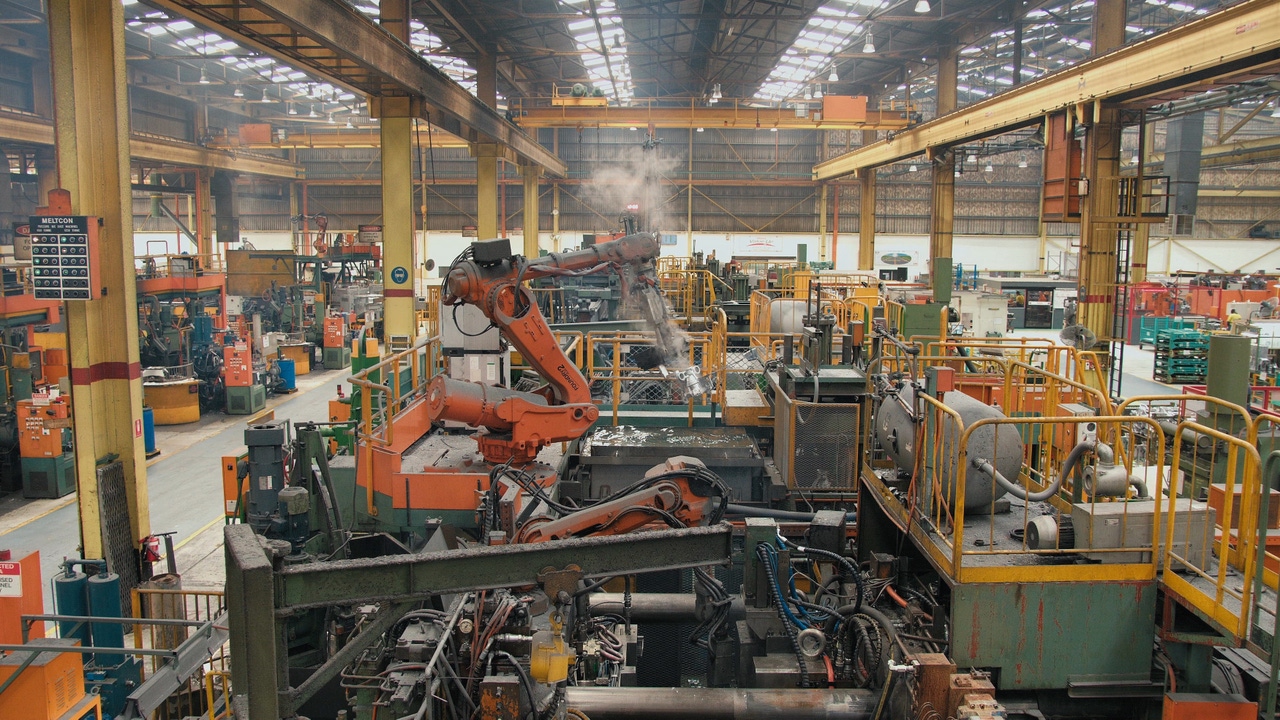Nissan Australia Thriving as Parts Manufacturer
With its expertise in high- and low-pressure die casting, precision machining, component assembly and accessories production, the plant makes 60 different parts specific to oil pans, transmission and final-drive housing, and electric vehicles.

Nissan Australia says automotive manufacturing in Australia is alive and well despite the high-profile departures of Toyota, Ford and General Motors.
The Japanese automaker began manufacturing parts at its dedicated casting plant in 1982 and it remains in high gear, continuing a production lineage that surpasses 50 years. It began assembling cars in Sydney in 1966, well before full-line local production began in 1972.
The Nissan Casting Plant continues to supply parts long after the 1992 closure of the vehicle-manufacturing plant.
The 968,760-sq.-ft. (90,000-sq.-m) plant in southeast Melbourne employs 192 workers on three shifts, seven days a week. It produces 2.6 million die-cast aluminum parts and more than 16,000 tow bars – all stamped with a unique Kangaroo insignia – with an export value of A$82.5 million ($62.3 million) a year.
With its expertise in high- and low-pressure die casting, precision machining, component assembly and accessories manufacturing, the plant makes 60 different parts specific to oil pans, transmission and final-drive housing and electric vehicles.
The parts go to Renault-Nissan Alliance assembly plants and Nissan-affiliated powertrain plants in Japan, the U.S., the U.K., Thailand, South Korea and Mexico. It also supplies companies such as Calsonic Kansei, Aichi Kikai and Jatco.
Peter Jones, managing director-Nissan Casting Australia, says the plant is critically important to the automaker’s global business.
“We have exclusive supply contracts awarded by Nissan Global that will keep the plant operating well into the next decade,” Jones says in a statement.
Many parts are fitted to Australian-spec vehicles. The Nissan Qashqai includes an Aussie-built gear carrier and rear cover; the Pathfinder features the oil pan assembly; the Nissan X-Trail and Renault Koleos include final drive-unit parts; the Infiniti Q50 also gets the gear carrier; while the manual-transmission casing on the Navara also is made Down Under.
“In addition to this, our parts (are featured) on over 30 different overseas models from a variety of our brands, including Nissan, Infiniti and Renault,” Jones says.
“This includes the just-released New Nissan Leaf, which includes an EV water-jacket inverter, inverter cover, inverter case and motor stator housing.”
Nissan has worked with Australia’s Commonwealth Scientific and Industrial Research Organization to develop technologies that guarantee the best workmanship.
“Our quality department uses the same kind of measuring machines and granite tables used by Formula One teams,” Jones says. “These parts are so precise that they match up exactly with parts made in Japan to a tolerance of 15 microns, less than the diameter of a human hair.”
In the past two years, supported by grants from the Victoria state government and the Australian government, Nissan has spent more than A$11 million ($8.3 million) on the plant.
“This includes investing in specific tooling and equipment with the most up-to-date technology for new-generation hybrid and EV components,” Jones says.
About the Author(s)
You May Also Like
_(2).jpg?width=700&auto=webp&quality=80&disable=upscale)


